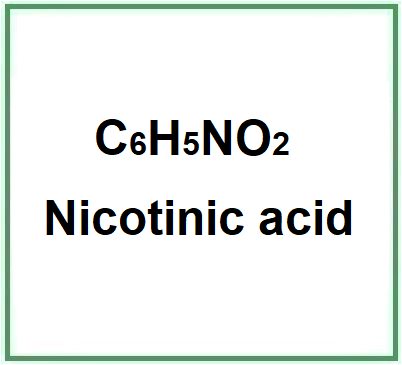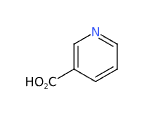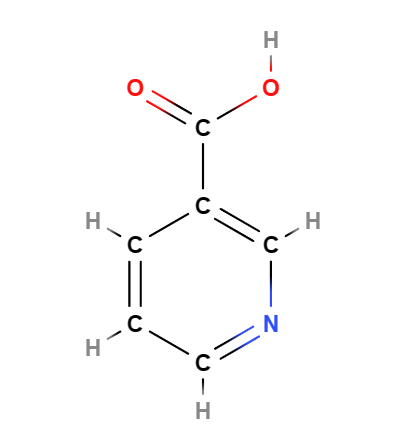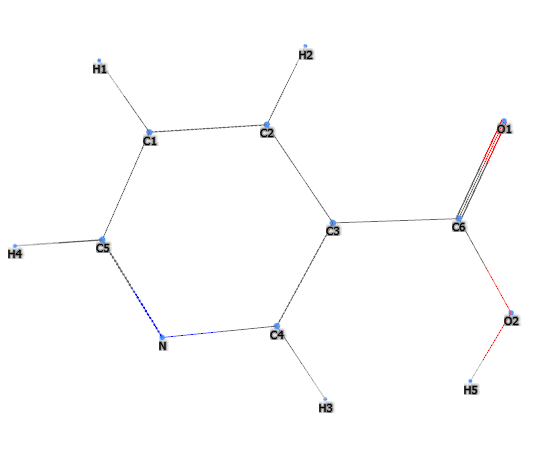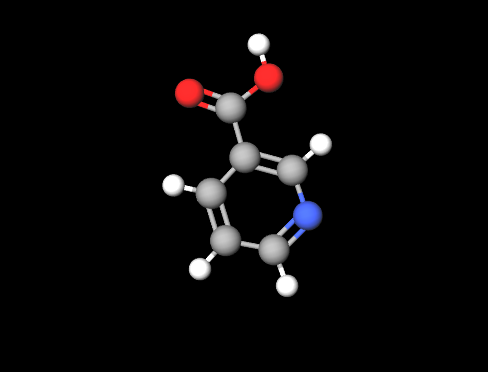Nicotinic acid or Niacin (pyridine-3-formic acid) an organic vitamin, is also known as Vitamin B3 , (a generic name that also includes vitamin PP, niacinamide, nicotinamide and derivatives) is one of the 8 water-soluble B-complex vitamins.
It is found in :
- muscle tissue
- fish
- meat
- chickens
- peanuts
- yeasts
- and other
Industrially it appears in the form of a white powder.

What it is used for and where
Medical
It is important for the conversion of proteins, carbohydrates and fats into energy.
It can reduce harmful LDL-cholesterol (which thickens and clogs the arteries), improve HDL-cholesterol values and thus reduce the risks for the cardiovascular system (1).
It also has positive indications for diabetes mellitus by bringing glycaemic values back to normal (2).
Food
Its deficiency can develop pellagra-like symptoms and is linked to a state of malnutrition. Ingredient included in the list of European food additives as E375 under the name nicotinic acid, acting as a stabiliser.
It is used in dairy products, in pasta making and in the production of maize flour.
Animal feed
Feed additive, which can improve milk production, poultry and meat quality.
Cosmetics
Skin conditioning agent - Mixed. This ingredient is responsible for modifying the condition of the skin when it is damaged or dry by reducing flaking and restoring elasticity.
Antistatic agent. Static electricity build-up has a direct influence on products and causes electrostatic adsorption. The antistatic ingredient reduces static build-up and surface resistivity on the surface of the skin and hair.
The most relevant studies on this vitamin have been selected with a summary of the contents:
Vitamin B3 studies
- Molecular Formula C6H5NO2 C5H4NCOOH HOOC5H4N
- Molecular Weight 123.111 g/mol
- CAS 59-67-6
- EC Number 200-441-0
- UNII 2679MF687A
- PubChem Substance ID 329823272
- MDL number MFCD00006391
- Beilstein Registry Number 109591
Synonyms:
- Nicotinic Acid
- niacin
- Pyridine-3-carboxylic acid
- Pellagrin
- 3-pyridinecarboxylic acid
- Akotin
- vitamin B3
- Daskil
- 3-Carboxypyridine
- Efacin
- Enduracin
- Pelonin
- Nicodelmine
- Linic
- Niconacid
- nicamin
- Pellagramin
- nicobid
- Direktan
- nicocap
- Niaspan
- nicolar
- Nicacid
- Bionic
- Nicangin
- Diacin
- Peviton
References____________________________________________________________________
(1) Landray MJ, Haynes R, Armitage J. Niacin for reduction of cardiovascular risk. N Engl J Med. 2014 Nov 13;371(20):1943-4. doi: 10.1056/NEJMc1411240.
Niacin for reduction of cardiovascular risk.
Mayer L.
N Engl J Med. 2014 Nov 13;371(20):1943. doi: 10.1056/NEJMc1411240#SA6.
Niacin for reduction of cardiovascular risk.
Santos-Gallego CG, Badimon J.
N Engl J Med. 2014 Nov 13;371(20):1943. doi: 10.1056/NEJMc1411240#SA5.
Niacin for reduction of cardiovascular risk.
van den Oever IA, Nurmohamed MT, Lems WF.
N Engl J Med. 2014 Nov 13;371(20):1942. doi: 10.1056/NEJMc1411240#SA4.
(2) Ding Y, Li Y, Wen A. Effect of niacin on lipids and glucose in patients with type 2 diabetes: A meta-analysis of randomized, controlled clinical trials. Clin Nutr. 2014 Sep 28. pii: S0261-5614(14)00247-7. doi: 10.1016/j.clnu.2014.09.019.
Wu L, Parhofer KG. Diabetic dyslipidemia. Metabolism. 2014 Aug 29. pii: S0026-0495(14)00258-3. doi: 10.1016/j.metabol.2014.08.010.
![]() Nicotinic acid
Nicotinic acid 

